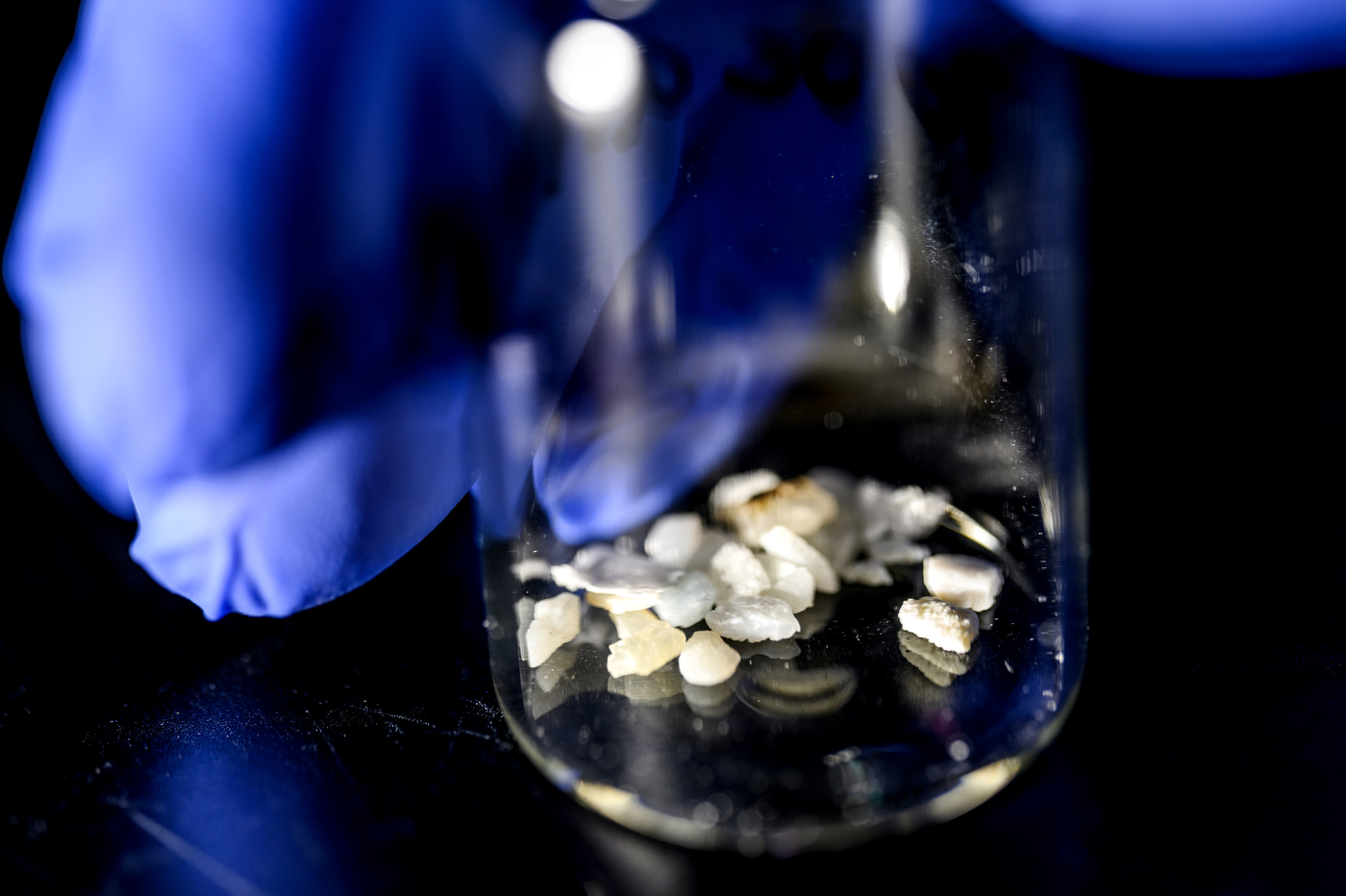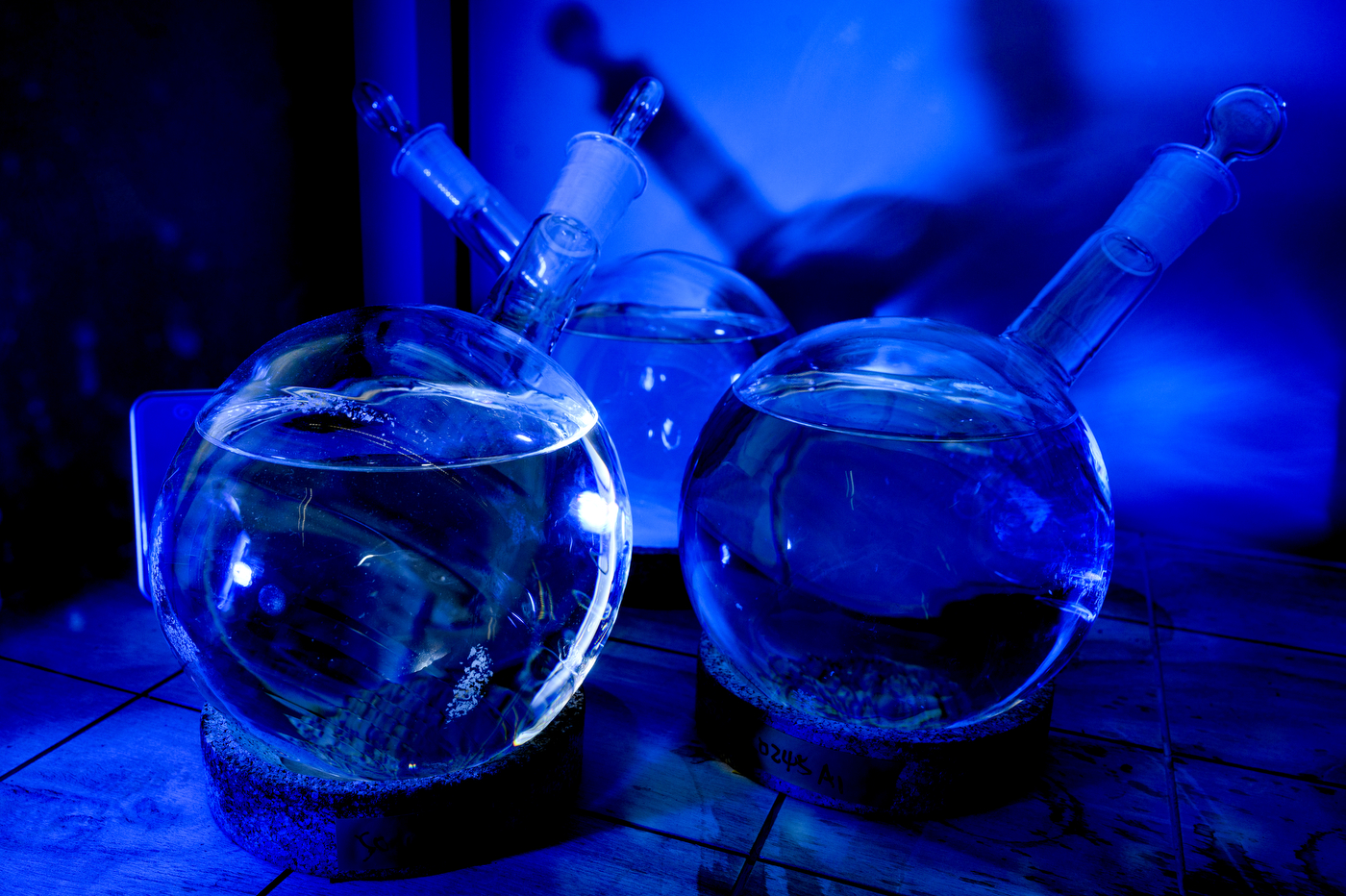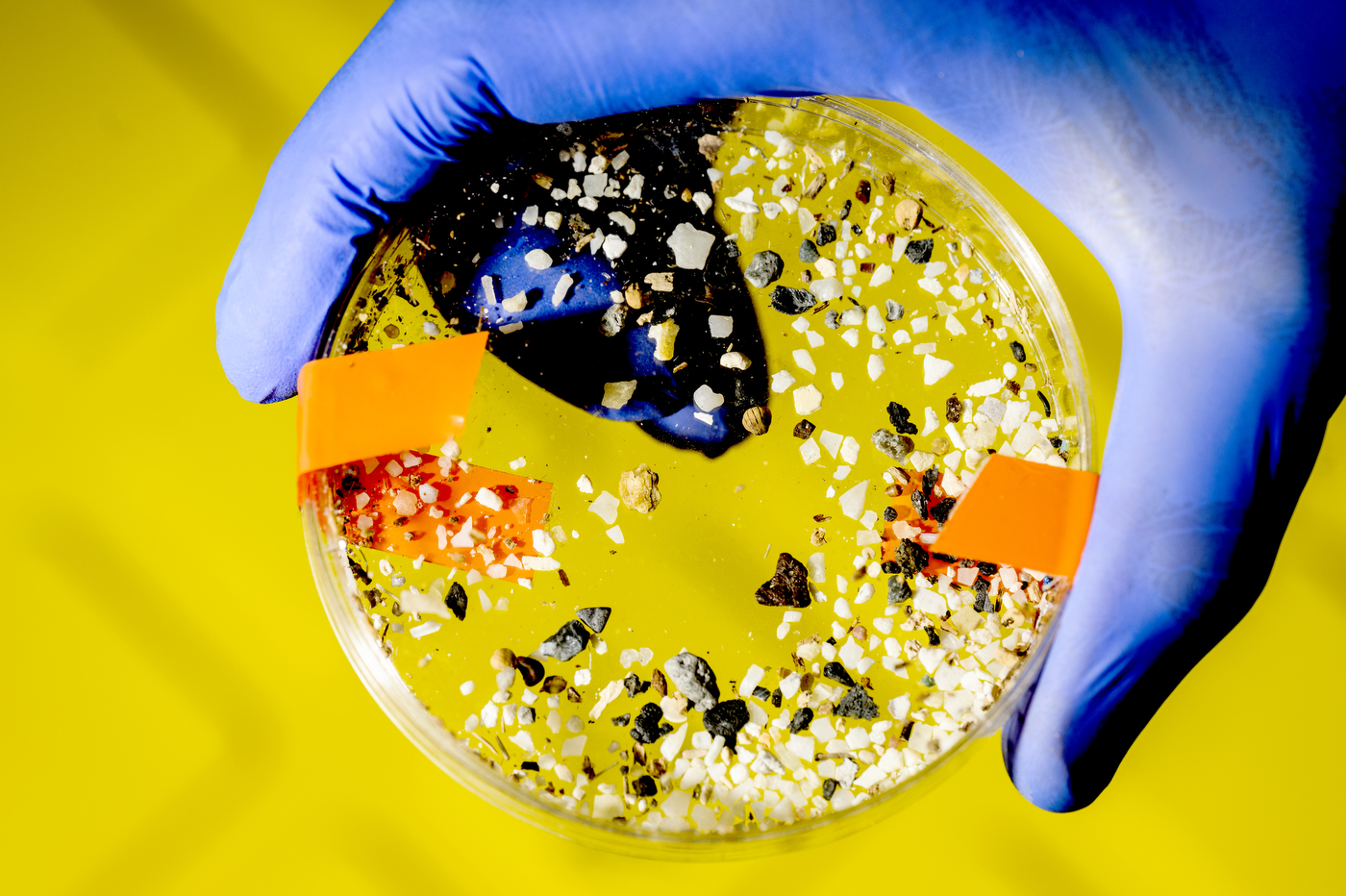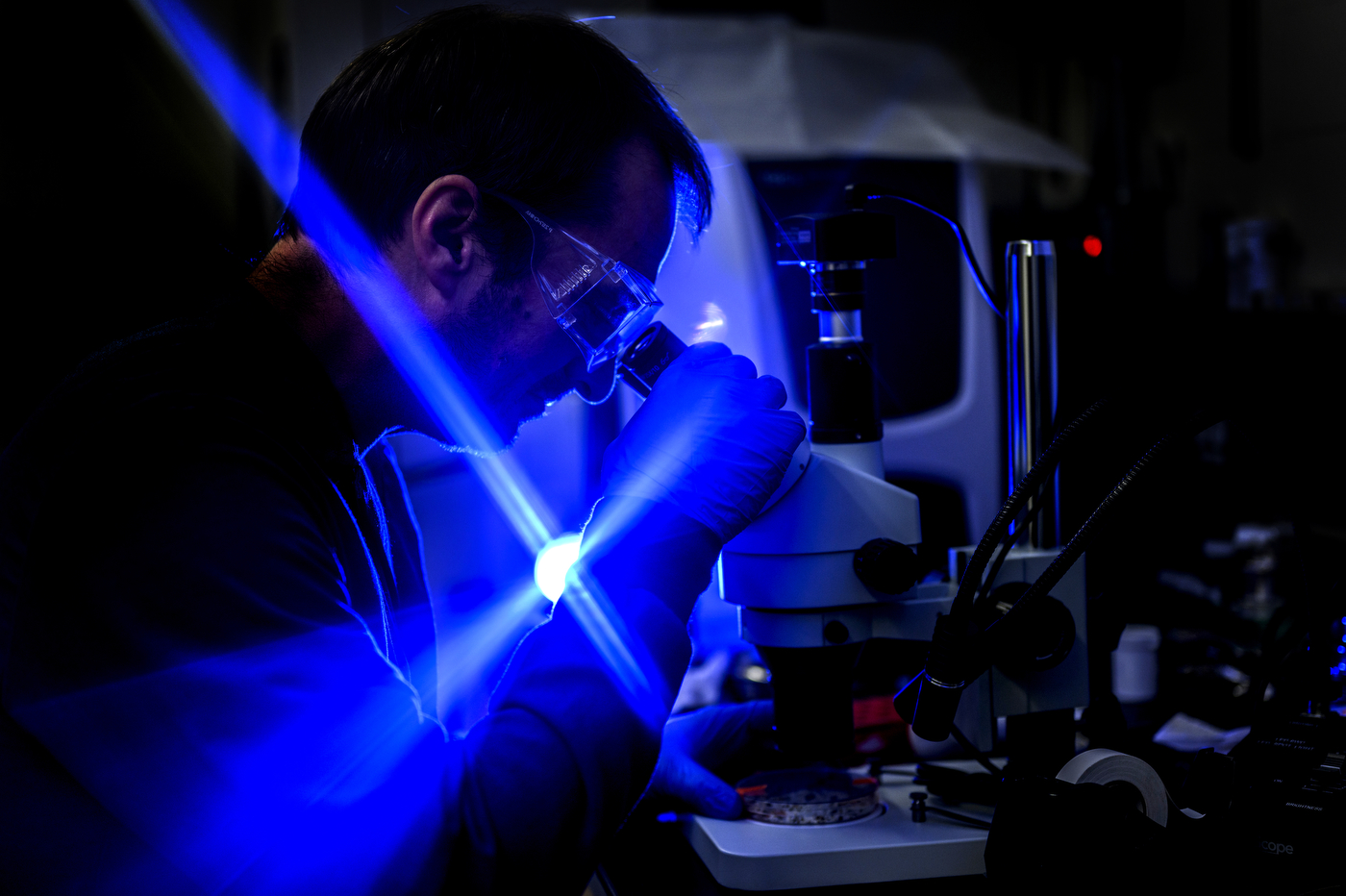Sunlight is Breaking Down Plastic Threatening Ocean Health
MES/COS/CEE Professor Aron Stubbins has found that sunlight breaks down plastics in the ocean into hundreds of new chemicals which potentially will have harmful environmental and health consequences.
This article originally appeared on Northeastern Global News. It was published by Cyrus Moulton. Main photo: Aron Stubbins, associate professor of marine and environmental sciences, inspects microplastics from the open ocean in the Mugar Life Sciences Building. Photo by Matthew Modoono/Northeastern University
What happens when sunlight breaks down plastics in the ocean? Potentially harmful chemical byproducts are left behind, research finds
Northeastern researchers found in 2021 that an estimated 4 million to 10 million tons of plastic carbon enter the ocean each year. Much of it ends up floating in subtropical currents.
Now, the researchers, led by Northeastern professor Aron Stubbins, have examined what happens when the plastics break down.
“We found that hundreds of chemicals are produced when plastics degrade in sunlight,” says Stubbins, professor of marine and environmental sciences, civil and environmental engineering, and chemistry and chemical biology at Northeastern. “This may have an impact on the ocean’s carbon cycle and marine chemistry as well as potential consequences for human health.”
 |  |
 |  |
Photos by Matthew Modoono/Northeastern University
Plastics are polymers formed from long chains of carbon that make them solid but also make them hydrophobic, or unable to be dissolved in water. Thus, they often end up floating in the ocean. Three plastics — polyethylene, polypropylene and expanded polystyrene — are particularly common marine sights; together making up roughly 70% of the plastics produced in the world.
Polyethylene and polypropylene are also particularly common in subtropical gyres where ocean currents cycle in a way that floating materials accumulate in a sort of patch. (Expanded polystyrene eventually becomes waterlogged and sinks, so it doesn’t usually make it past coastal waters, Stubbins notes).
And while we may hear of plastics lasting hundreds of years, that doesn’t mean plastics don’t degrade at all — particularly when exposed to intense ultraviolet rays from the sun beating down on the subtropical oceans.
So, Stubbins and post-doctoral fellow Lixin Zhu set out to find out what chemicals resulted from this photodegradation of polyethylene, polypropylene, and expanded polystyrene.
To do so, they collected microplastic from the ocean and cut other, store-bought plastic containers such as shampoo bottles and a food containers, into 3 millimeter pieces. They sealed these in quartz jars (glass blocks out UV rays; which is why we don’t get sunburned from sitting in a window, Stubbins notes) half-filled with seawater that was collected from the South Atlantic.
The researchers then measured the amount of plastics and the chemistry of dissolved organic carbon in the jars.
Read full story at Northeastern Global News